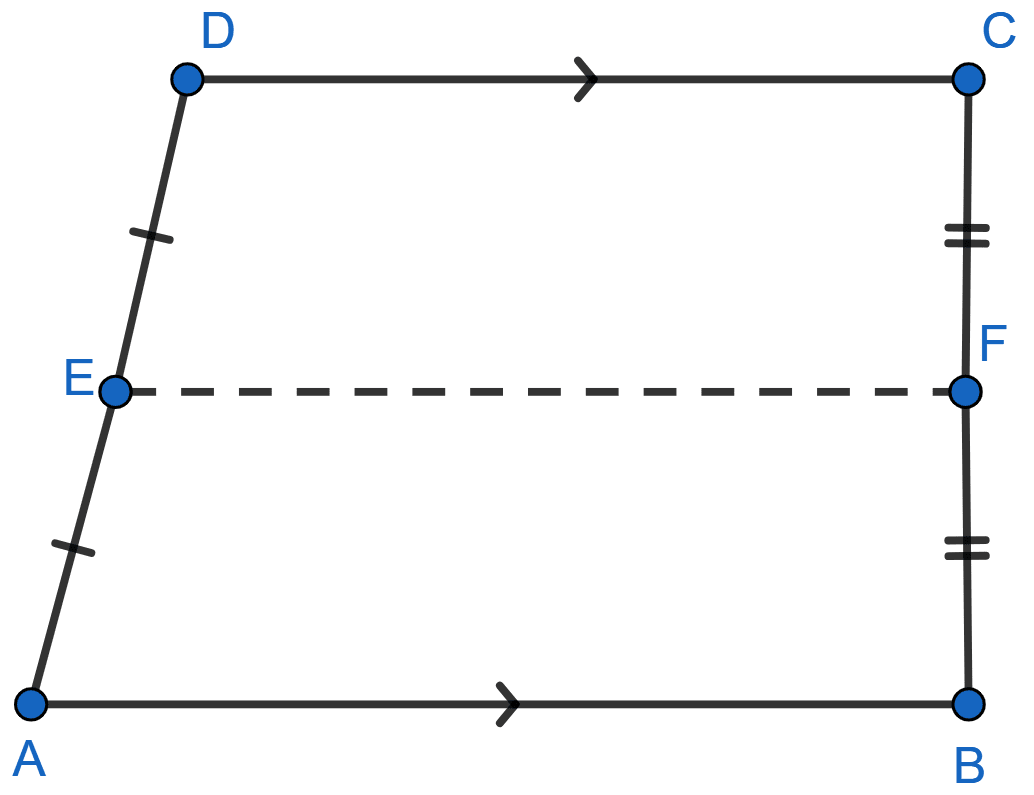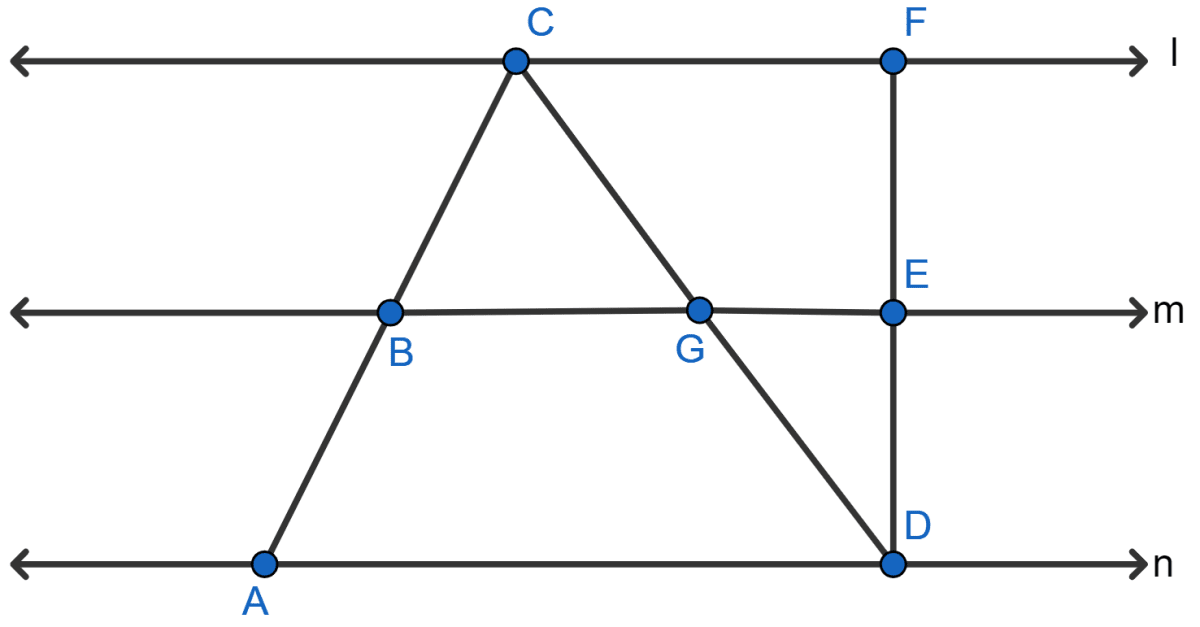Mathematics
In the figure given below, ABCD is a kite in which BC = CD, AB = AD. E, F, G are mid-points of CD, BC and AB respectively. Prove that :
(i) ∠EFG = 90°
(ii) The line drawn through G and parallel to FE bisects DA.

Mid-point Theorem
58 Likes
Answer
Construction,
Join AC and BD
AC and BD intersect at O.
Join EF and FG.

(i) We know that,
Diagonals of a kite intersect at right angles.
∠MON = 90° …….(i)
In △BCD,
E and F are mid-points of CD and BC,
EF || DB and EF = DB ……(ii)
Since, EF || DB we can say that,
MF || ON.
As sum of opposite angles of a quadrilateral = 180°
∠MON + ∠MFN = 180°
90° + ∠MFN = 180°
∠MFN = 90°.
From figure,
∠EFG = ∠MFN = 90°.
Hence, proved that ∠EFG = 90°.
(ii) From part (i) we get,
FE || BD
Here line through G (GH) is parallel to FE.
∴ GH || FE
or GH || BD.
In △ABD,
GH || BD and G is midpoint of AB,
∴ H is mid-point of AD (By converse of mid-point theorem).
Hence, proved that the line drawn through G and parallel to FE bisects DA.
Answered By
37 Likes
Related Questions
In the quadrilateral given below, AB || DC. E and F are mid-points of non-parallel sides AD and BC respectively. Calculate :
(i) EF if AB = 6 cm and DC = 4 cm
(ii) AB if DC = 8 cm and EF = 9 cm.

In the quadrilateral given below, AD = BC, P, Q, R and S are mid-points of AB, BD, CD and AC respectively. Prove that PQRS is a rhombus.

In the adjoining figure, the lines l, m and n are parallel to each other, and G is mid-point of CD. Calculate :
(i) BG if AD = 6 cm
(ii) CF if GE = 2.3 cm
(iii) AB if BC = 2.4 cm
(iv) ED if FD = 4.4 cm

In a △ABC, AB = 3 cm, BC = 4 cm and CA = 5 cm. If D and E are mid-points of AB and BC respectively, then the length of DE is
1.5 cm
2 cm
2.5 cm
3.5 cm